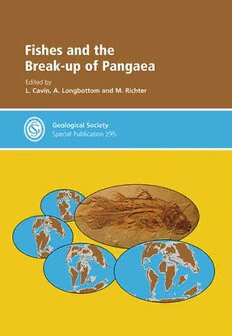
Fishes and the Break-up of Pangea - Special Publication no 295 (Special Publication) PDF
374 Pages·2008·14.671 MB·English
Most books are stored in the elastic cloud where traffic is expensive. For this reason, we have a limit on daily download.
Preview Fishes and the Break-up of Pangea - Special Publication no 295 (Special Publication)
Description:
This volume, in honour of Peter L. Forey, is about fishes as palaeobiogeographic indicators in the Mesozoic and Cenozoic. The last 250 million years in the history of Earth have witnessed the break-up of Pangaea, affecting the biogeography of organisms. Fishes occupy almost all freshwater and marine environments, making them a good tool to assess palaeogeographic models.The volume begins with studies of Triassic chondrichthyans and lungfishes, with reflections on Triassic palaeogeography. Phylogeny and distribution of Late Jurassic neoselachians and basal teleosts are broached, and are followed by five papers about the Cretaceous, dealing with SE Asian sharks, South American ray-finned fishes and coelacanths, European characiforms, and global fish palaeogeography. Then six papers cover Tertiary subjects, such as bony tongues, eels, cypriniforms and coelacanths.There is generally a good fit between fish phylogenies and the evolution of the palaeogeographical pattern, although a few discrepancies question details of current palaeogeographic models and/or some aspects of fish phylogeny.Also available: Non-Marine Permian Biostratigraphy and Biochronology - ISBN 1862392064 CRETACEOUS-TERTIARY HIGH-LATITUDE PALAEOENVIRONMENTS - ISBN 1862391971 The Application of Ichnology to Palaeoenvironmental And Stratigraphic Analysis - ISBN 1862391548The Geological Society of LondonFounded in 1807, the Geological Society of London is the oldest geological society in the world, and one of the largest publishers in the Earth sciences.The Society publishes a wide range of high-quality peer-reviewed titles for academics and professionals working in the geosciences, and enjoys an enviable international reputation for the quality of its work.The many areas in which we publish in include:-Petroleum geology-Tectonics, structural geology and geodynamics-Stratigraphy, sedimentology and paleontology-Volcanology, magmatic studies and geochemistry-Remote sensing-History of geology-Regional geology guides
See more
The list of books you might like
Most books are stored in the elastic cloud where traffic is expensive. For this reason, we have a limit on daily download.
